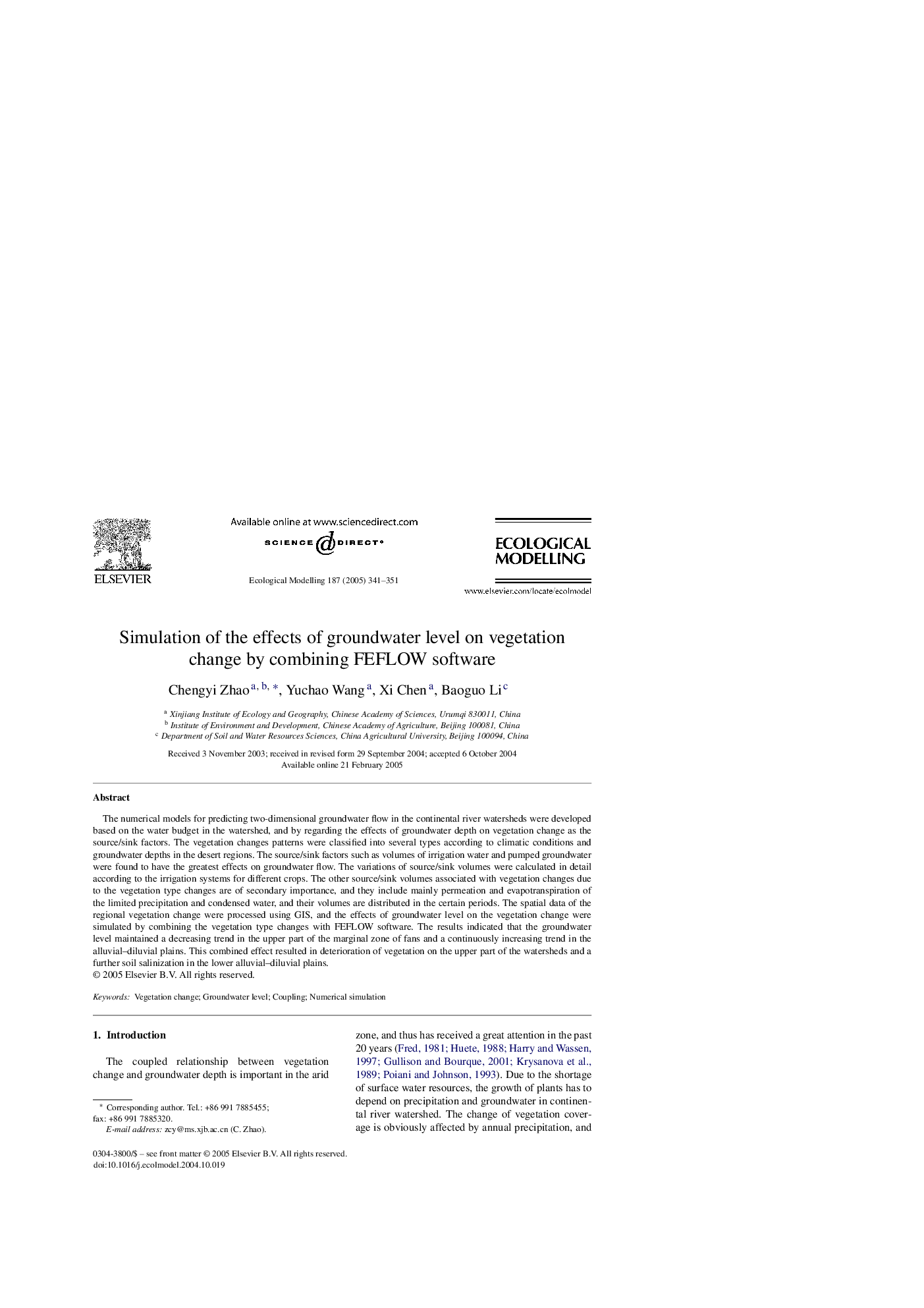| Article ID | Journal | Published Year | Pages | File Type |
|---|---|---|---|---|
| 9443354 | Ecological Modelling | 2005 | 11 Pages |
Abstract
The numerical models for predicting two-dimensional groundwater flow in the continental river watersheds were developed based on the water budget in the watershed, and by regarding the effects of groundwater depth on vegetation change as the source/sink factors. The vegetation changes patterns were classified into several types according to climatic conditions and groundwater depths in the desert regions. The source/sink factors such as volumes of irrigation water and pumped groundwater were found to have the greatest effects on groundwater flow. The variations of source/sink volumes were calculated in detail according to the irrigation systems for different crops. The other source/sink volumes associated with vegetation changes due to the vegetation type changes are of secondary importance, and they include mainly permeation and evapotranspiration of the limited precipitation and condensed water, and their volumes are distributed in the certain periods. The spatial data of the regional vegetation change were processed using GIS, and the effects of groundwater level on the vegetation change were simulated by combining the vegetation type changes with FEFLOW software. The results indicated that the groundwater level maintained a decreasing trend in the upper part of the marginal zone of fans and a continuously increasing trend in the alluvial-diluvial plains. This combined effect resulted in deterioration of vegetation on the upper part of the watersheds and a further soil salinization in the lower alluvial-diluvial plains.
Related Topics
Life Sciences
Agricultural and Biological Sciences
Ecology, Evolution, Behavior and Systematics
Authors
Chengyi Zhao, Yuchao Wang, Xi Chen, Baoguo Li,
